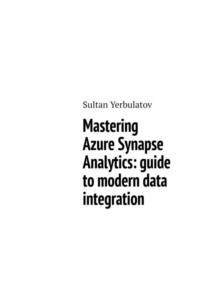
Mastering Azure Synapse Analytics: guide to modern data integration
Key Components of Synapse Pipelines
Activities:
At the core of Synapse Pipelines are activities, representing the individual processing steps within a pipeline. Activities can range from data movement tasks, such as copying data between storage accounts, to data transformation tasks using Azure Data Factory’s mapping and transformation capabilities.
Конец ознакомительного фрагмента.
Текст предоставлен ООО «Литрес».
Прочитайте эту книгу целиком, купив полную легальную версию на Литрес.
Безопасно оплатить книгу можно банковской картой Visa, MasterCard, Maestro, со счета мобильного телефона, с платежного терминала, в салоне МТС или Связной, через PayPal, WebMoney, Яндекс.Деньги, QIWI Кошелек, бонусными картами или другим удобным Вам способом.
Вы ознакомились с фрагментом книги.
Для бесплатного чтения открыта только часть текста.
Приобретайте полный текст книги у нашего партнера:
Всего 10 форматов